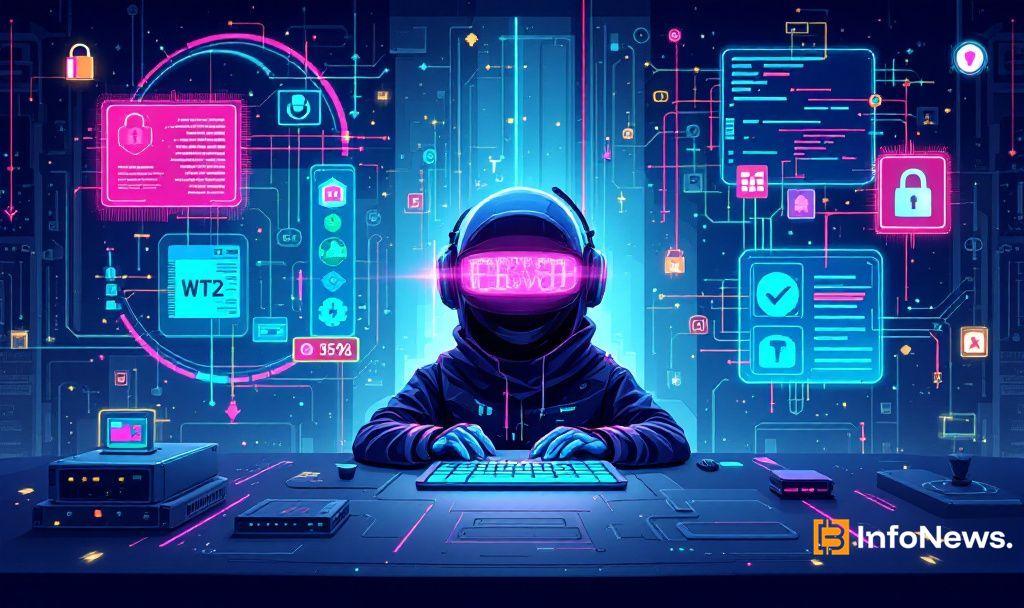Major Cosmos DEX Osmosis Unveils Polaris: The Token Portal
Osmosis says it’s pioneering a new category in DeFi: the Token Portal, an application that combines the strengths of DEXes, bridges, and wallets.

The team behind the Cosmos -based decentralized exchange (DEX) Osmosis said it is preparing to launch a new project called Polaris that they’ve been developing in stealth.
Polaris: The Token Portal will be unveiled at Solana Breakpoint on September 20.
According to the press release, Polaris is a Token Portal that simplifies cross-chain trading and asset management.
It is a unified interface that allows users to trade all tokens across all chains from their existing wallets with one click.
This, said the team, simplifies the process of tracking and trading assets across multiple networks.
“Polaris focuses on your experience as the user, reducing friction and making asset acquisition effortless, whether on Solana , Bitcoin , Cosmos , EVM chains , or elsewhere,” the press release stated.
Osmosis went on to list the key benefits of the new project.
Polaris makes the process simpler for users as it doesn’t require any additional wallet downloads, it said.
It allows everyone to use their own wallets to manage assets across different ecosystems.
Furthermore, Polaris enables users to trade USDC on Ethereum for Native BTC or Solana memecoins with one click.
In that case, Polaris handles everything behind the scenes, including conversion and bridging.
Additionally, users can track their entire portfolio – assets, performance, and transactions – across multiple chains and wallets from one interface, instead of switching between platforms.
Lastly, Polaris will enable easy gas token acquisition for transacting on any chain, the team said.
One Place for All
Polaris argues that DeFi should be accessible and user-centric.
Their vision is to enable users to trade and track assets freely across all chains. “You deserve a better cross-chain experience. All tokens. All chains. One App,” they stressed.
The idea behind the initial approach with Osmosis, said the team, was that users want a single place to trade all assets.
Osmosis saw success, but attracting liquidity from platforms with established DeFi ecosystems was difficult. These chains do not want to share their liquidity with competitors.
However, “what we’ve learned through Cosmos and Osmosis is that the decentralized nature of DeFi, with liquidity spread across many venues, isn’t a weakness — it’s actually a strength,” the team remarked.
Fragmentation is not a problem but a superpower.
The decentralization creates “a highly resilient system that can outcompete” centralized exchanges in the long run.
Moreover, leveraging liquidity’s multichain nature, Osmosis can create a unified DeFi portal that is “more robust and adaptable than any centralized counterpart.”
Notably, portals are not tied to any specific liquidity venue. Therefore, they can fully focus on providing a scalable interface that operates across all chains.
They integrate existing liquidity venues, bringing them additional users and trading volume, unlike DEXes, which need to build liquidity from scratch and fight competitors.
Furthermore, token portals use bridge abstraction to integrate with any existing bridge. According to the team, “the breadth of a coalition of bridge partners is far greater than that of a single bridge product.”
Therefore, portals “unbundle” the user interface from custody, liquidity, and bridges. They provide a flexible, scalable, and user-friendly platform, as well as a chain-agnostic and user-centric experience.
‘No More Juggling’
Polaris is agnostic to various tech stacks and networks. This allows the team to execute integrations in the fastest and most effective manner in today’s market, they claim.
Sunny Aggarwal, co-founder of Osmosis and Polaris, stated that DeFi is designed in a chain-centric way, creating a fragmented user experience. He said:
“We wanted to take everything we’ve learned from our years of building interoperability products like Cosmos and Osmosis (the Interchain DEX), to build something that really abstracts away the complexity of chains for the users.”
“No more juggling multiple wallets, researching bridges, or jumping between different DEX sites. With Polaris, you’ll be able to trade all tokens, across all chains, from one seamless interface,” Aggarwal added.
Meanwhile, to date, the Osmosis DEX has facilitated over $35 billion in trading volume, said the team.
More than 100 blockchains have connected to the Osmosis appchain via the Inter-Blockchain Communication Protocol (IBC) . The DEX also houses an expanding suite of DeFi applications.
Disclaimer: The content of this article solely reflects the author's opinion and does not represent the platform in any capacity. This article is not intended to serve as a reference for making investment decisions.
You may also like
UK Investment Bank Chair Calls for Cryptocurrency Purchase Tax to Boost Equities
Lisa Gordon, chair of investment bank Cavendish, has proposed that the UK introduce a tax on cryptocurrency purchases to encourage more Britons to invest in local equities, which she believes could stimulate economic growth.

Fartcoin Sees 22% Surge, Reaches Monthly Peak

Ripple USD Stablecoin Achieves Supply Milestone

Nillion Introduces Blind Compute for Data Privacy

